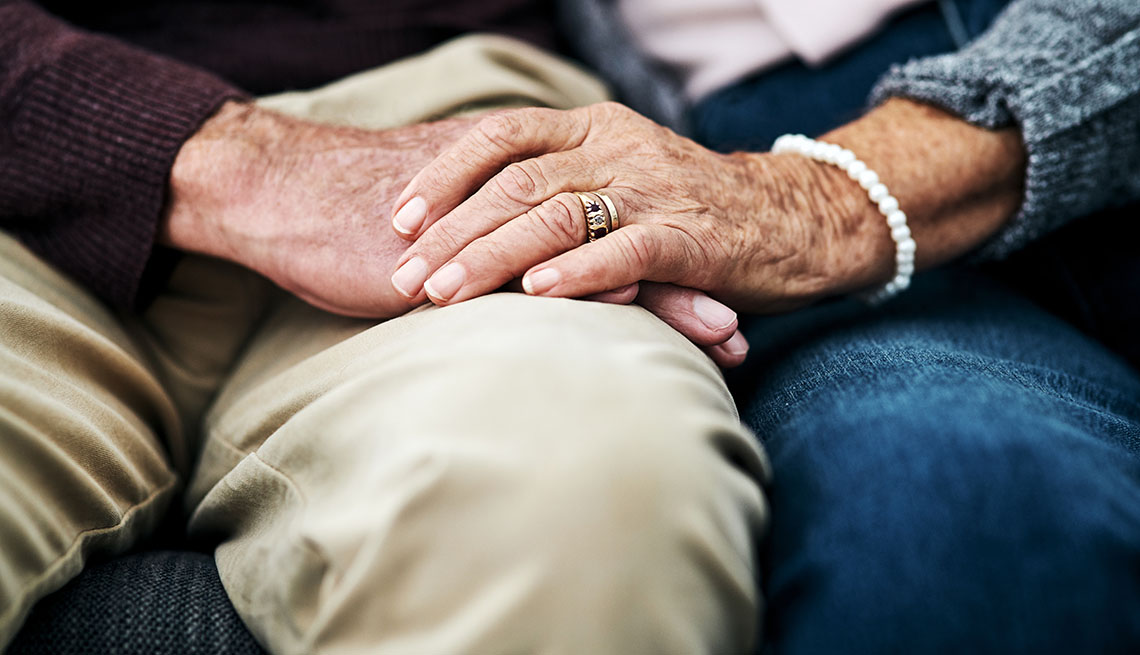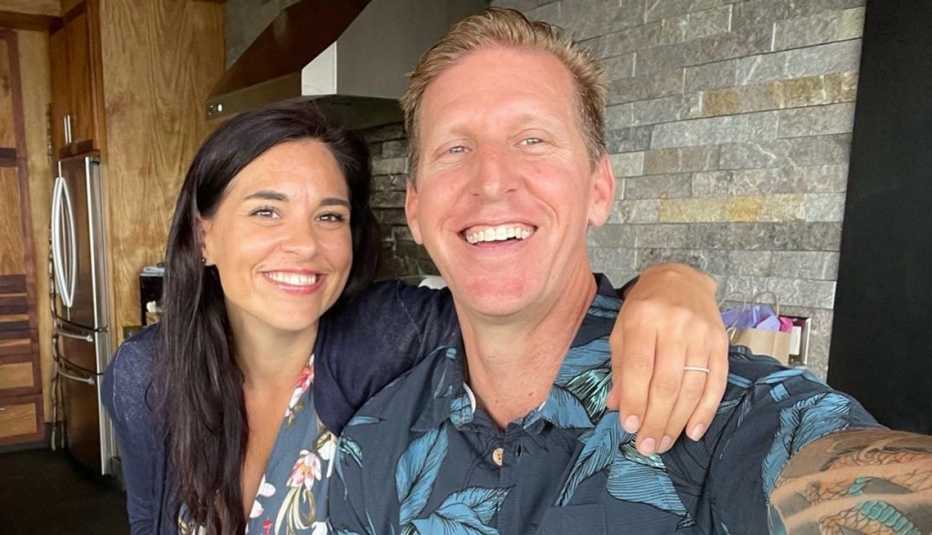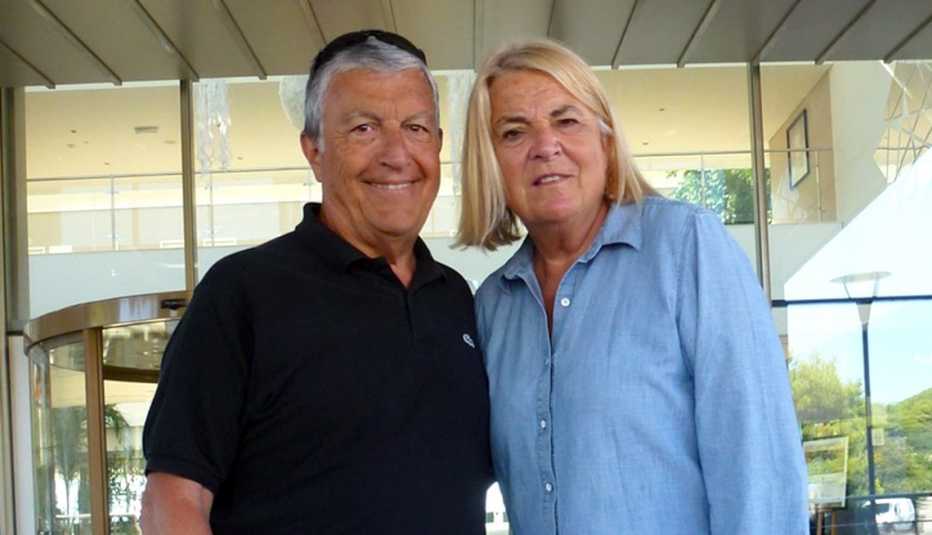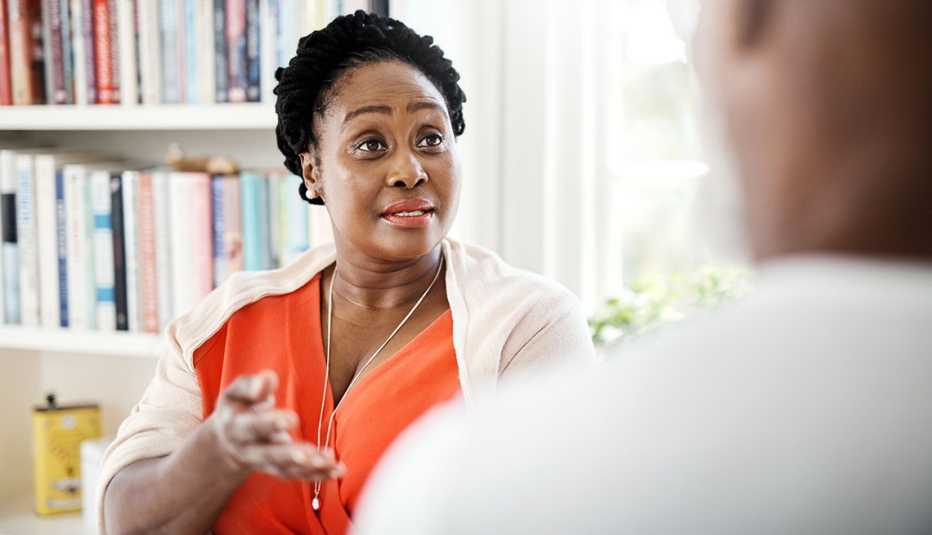AARP Hearing Center
Almost a year into caregiving my husband after his traumatic brain injury, we began to bicker about some mundane household issue I can no longer remember. I suddenly stopped, mid-sentence, a look of awe on my face. “We’re having our very first argument since you were injured!” I said. He looked confused. “And it’s so normal!” An argument had never felt so good.
For caregivers, the loss of that “former couple self” can be devastating. I’d been completely focused on Bob’s arduous recovery, watching like a hawk as he slowly rebuilt his ability to speak, read and write. While his determination was inspiring, there were moments when I felt more like his mother than his partner and wife. I worried about how we would keep that feeling of parity alive going forward.
Therapist Augustina Rueda, 54, from Rye, New York, has worked with couples navigating these thorny issues. “It’s so important to try to be present with the person you love beyond the circumstances of their injury or illness,” she says. “Love and romance are intentions, and we have to work to interrupt our minds from being in the driver’s seat during the day-to-day activities and create room to be partners, lovers and friends.”
Work to create romance
When Clint Viebrock, a retired airline pilot and adaptive ski instructor from Telluride, Colorado, was diagnosed with pancreatic cancer, his beloved wife, Susan Viebrock, 66, became his caregiver and champion for the next two years, until he passed away from complications relating to his treatments in August 2021.


“Romance is a coefficient of love,” she explains. “And to the extent we were able, we set an intention to do every loving thing we had done before, modifying as the evolving situation demanded.”
The couple continued to honor birthdays and anniversaries as they had over the past three decades, by writing each other love letters and exchanging gifts. They also maintained an intense physical relationship that they modified through the rigors of chemotherapy and radiation treatments.
“The logistical details of being intimate were, to say the least, challenging,” explains Susan, “but we maintained physical contact in whatever ways we could. The goal was to honor our partnership and our (formerly) smokin’ hot, fairy-tale romance.”
When Clint became too weak to be physically active, the couple watched movies, held hands and “smooched.” Susan would read to her husband, and they listened to audiobooks together. “Our nonstop love affair ended as it began,” says Susan, “in deep attraction and respect.”







































































